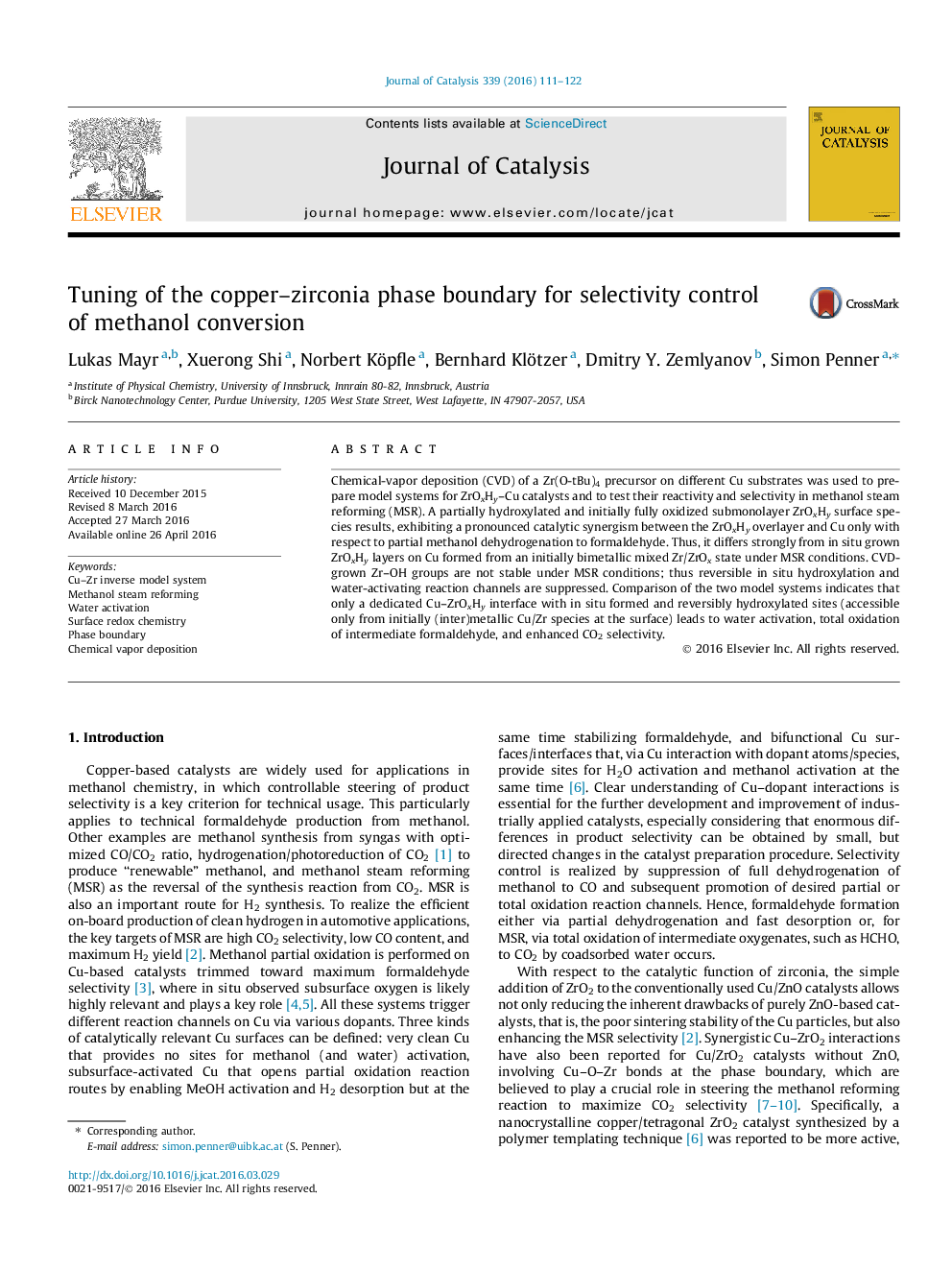| Article ID | Journal | Published Year | Pages | File Type |
|---|---|---|---|---|
| 60571 | Journal of Catalysis | 2016 | 12 Pages |
•Chemical vapor deposition (CVD) of a ZrOxHy–Cu model catalyst.•Synergism between ZrOxHy and Cu to yield formaldehyde in methanol steam reforming.•No in situ formation of reaction-stable CVD-grown Zr–OH groups.•Reversible in situ hydroxylation and water activation are suppressed.•Identification of knowledge-based pathways of CO2-selective Cu/ZrOx catalyst design.
Chemical-vapor deposition (CVD) of a Zr(O-tBu)4 precursor on different Cu substrates was used to prepare model systems for ZrOxHy–Cu catalysts and to test their reactivity and selectivity in methanol steam reforming (MSR). A partially hydroxylated and initially fully oxidized submonolayer ZrOxHy surface species results, exhibiting a pronounced catalytic synergism between the ZrOxHy overlayer and Cu only with respect to partial methanol dehydrogenation to formaldehyde. Thus, it differs strongly from in situ grown ZrOxHy layers on Cu formed from an initially bimetallic mixed Zr/ZrOx state under MSR conditions. CVD-grown Zr–OH groups are not stable under MSR conditions; thus reversible in situ hydroxylation and water-activating reaction channels are suppressed. Comparison of the two model systems indicates that only a dedicated Cu–ZrOxHy interface with in situ formed and reversibly hydroxylated sites (accessible only from initially (inter)metallic Cu/Zr species at the surface) leads to water activation, total oxidation of intermediate formaldehyde, and enhanced CO2 selectivity.
Graphical abstractFigure optionsDownload full-size imageDownload high-quality image (75 K)Download as PowerPoint slide
